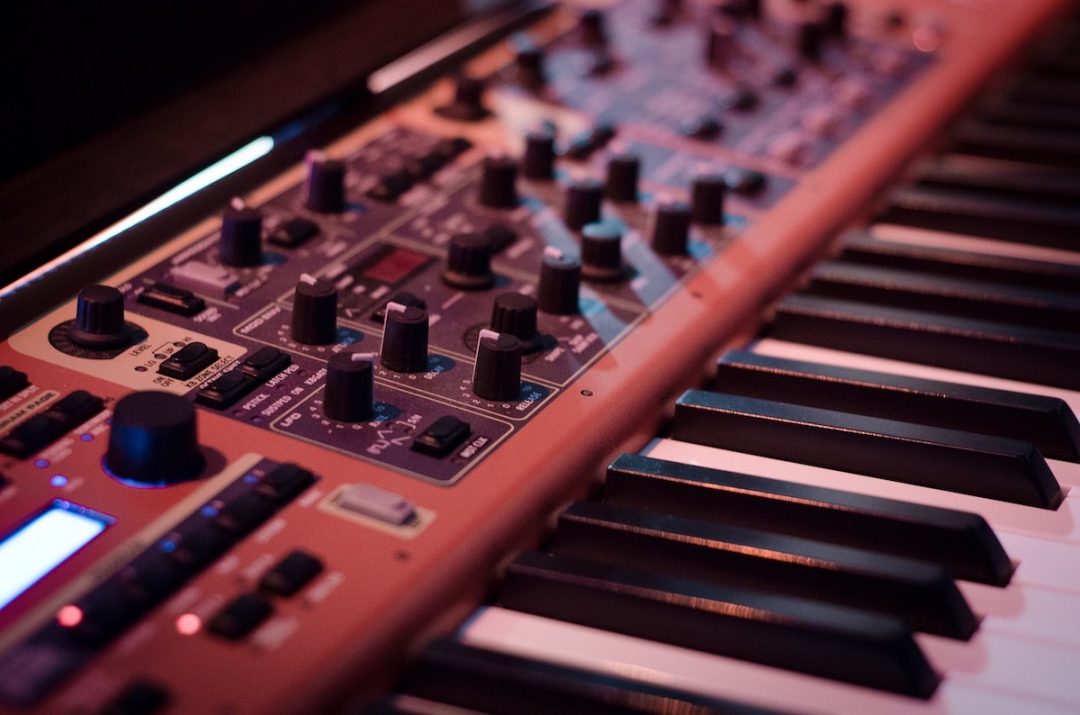ADSR stands for attack, decay, sustain, and release. It’s also known as a sound’s “envelope,” which includes all 4 of these tone-shaping elements. ADSR is an important concept in music production and sound design, especially if you plan on building synth sounds from the ground up!
What is ADSR?
- Attack: the time it takes for a sound to go from silent to it’s loudest level
- Decay: how long it takes a sound to go from the attack’s peak to the sustain level
- Sustain: the level a sound maintains when you hold a note
- Release: how long it takes a sound to return to silence after you release a note
Now that we have that out of the way, let’s see how we can practically apply these parameters in music production and synthesis.
Applying ADSR in Music Production
There are tons of uses for ADSR. But there are also a handful of techniques that are really useful for creating certain kinds of synth sounds using your favorite VSTs or hardware.
1. Create pads using a long attack and long release
A long attack means notes will have a “ramping up” effect that lends itself incredibly well to lush pad type sounds. A long release subsequently means the notes will hang on for a while after releasing a key and slowly die out.
2. Create a staccato effect with a super fast attack time
If you keep the attack time at 0 — its fastest — you can quickly and easily get a cool staccato sound. This also works really well for creating percussive type sounds like a snare, tom, or hi-hat.
The attack doesn’t necessarily always have to be 0, but keeping it low/quick is the key to achieving that stabbing, percussive sound.
3. Clean up the heads/tails of samples
Pops and clicks at the beginning and/or end of clips is a common problem if you’re chopping up samples. But, you can actually use ADSR to remove these unwanted noises!
By adjusting the Attack time to be slightly longer, you will get rid of the initial clicks and pops that you might be hearing. It’s very similar to creating a super short fade-in. At the other end of a clip, you can adjust the release to be just shorter to “fade out” a clip with a pop or click at the end.
4. Emphasize transients using a slower decay and lower sustain level
If you’re using a pad or lead sound with a pretty sharp attack, a medium decay paired with a lower sustain level is a great way to emphasize those early transients for extra character and bite.
Transients are basically the parts of a sound where the most energy happens. Think about a snare or kick drum — these instruments have incredibly fast transients (or attacks) with very little sustain or decay.
On a synth, a lower sustain and medium decay highlights that initial punch of a sound, but won’t let it overpower all the other elements in an arrangement. Keeping your sustain lower is an excellent way to give your track some dynamics, separating it from the rest of the mix.
5. Extend the release on percussion for some resonance
Another great technique for synthesized percussion is to extend the release time on sounds like hi-hats, crashes, or even snares. Adding a long release time will you give you some nice tails for added space and texture right away — no plugins necessary!
ADSR isn’t just for sound synthesis, though…
ADSR in Mixing
While mixing audio, changing the ADSR can still be an incredibly powerful tool for tone shaping. If you’re having a hard time getting an instrument to sit right in the mix, reach for a tool called a transient designer.
Transient designers, or shapers, are super useful for getting an instrument to sit where it should in the mix. Most of them just have 2 settings — attack and sustain — and a simple boost/cut for each.
Attack sharpens or softens the initial transient. Increasing the attack makes the transient punchier, and decreasing attack softens it. Sustain effects the tail of a sound, shaping the transients occurring after the initial attack. Decreasing the sustain shortens the sound, making it more succinct. Increasing the sustain brings up the natural reverb tail, making it sound spacier.
You can probably imagine just how useful ADSR is for mixing. If you want something to sit more forward in the mix, increase the attack. If you want to push it back, lower the attack. You can also add or subtract a sense of space around an instrument by increasing or turning down the sustain. This is an awesome way to add room around an instrument without using reverb!
With ADSR, you can create the perfect sound.
Wrapping your head around ADSR opens up a ton of possibilities for sound design and transient shaping. Changing a sound’s envelope can completely alter the way it’s perceived!
